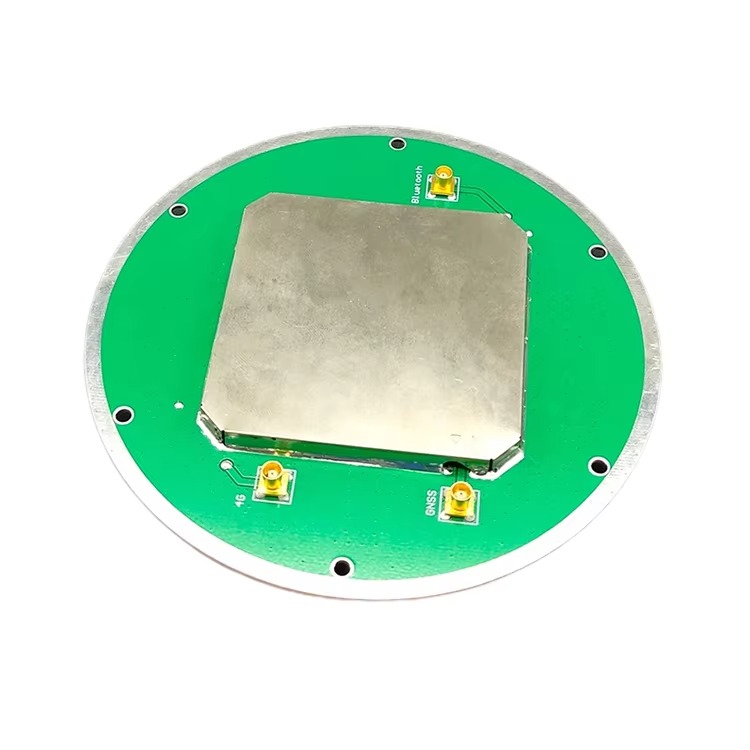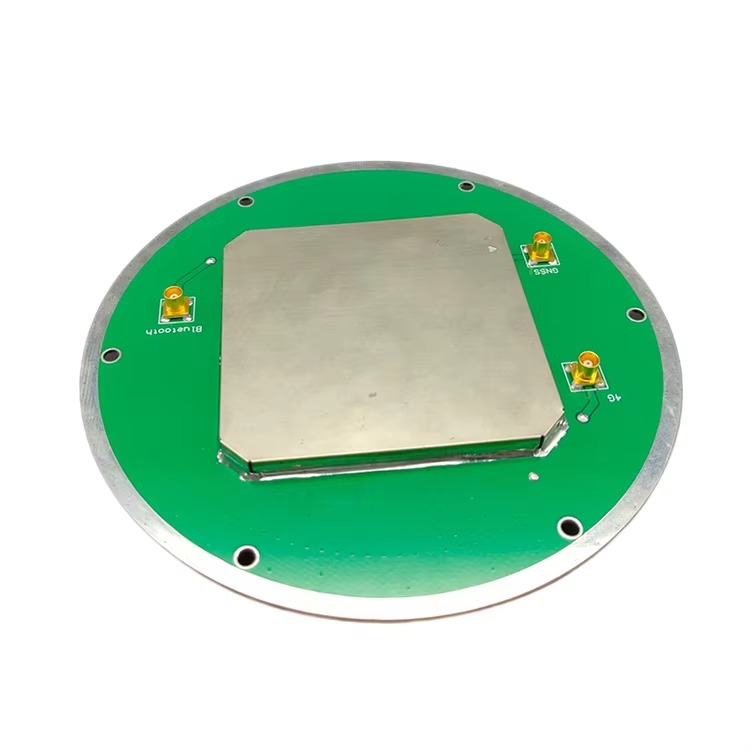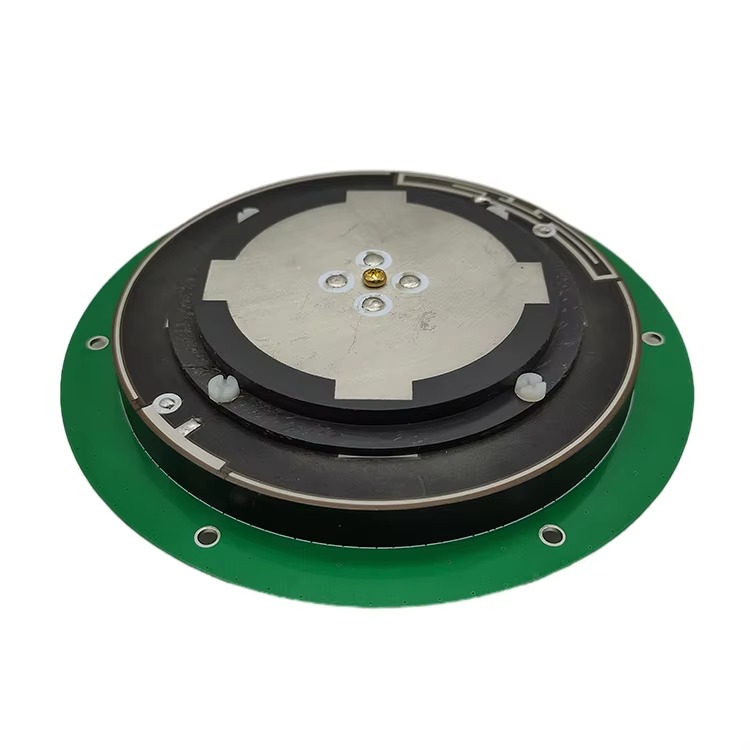Overview
Definition and Importance
A multi-constellation CORS base station antenna is a specialized antenna capable of receiving signals from various GNSS constellations, such as GPS (United States), GLONASS (Russia), Galileo (European Union), BeiDou (China), and others. These antennas are integral to CORS networks, which provide real-time, high-accuracy positioning data to a wide range of users, from surveyors and geoscientists to agricultural and autonomous vehicle operators. The ability to tap into multiple constellations enhances the reliability, availability, and accuracy of PNT services, especially in challenging environments where signal obstruction or interference is prevalent.
Evolution of GNSS Constellations
The landscape of GNSS constellations has evolved significantly over the past few decades. Initially dominated by GPS, the field has witnessed the emergence of GLONASS, Galileo, and BeiDou, among others, each expanding the global coverage and redundancy of satellite signals. This proliferation of constellations has necessitated the development of multi-constellation compatible antennas, capable of harnessing the full potential of these diverse systems. Today, multi-constellation antennas are not just a luxury but a necessity for achieving the highest levels of PNT accuracy and resilience.
Technological Advancements
Technological advancements have played a pivotal role in the development of multi-constellation CORS base station antennas. Innovations in antenna design, materials science, and signal processing have enabled these antennas to achieve superior performance in terms of gain, bandwidth, and multipath rejection. Advanced manufacturing techniques, such as 3D printing and precision machining, have facilitated the production of antennas with precise geometric shapes and optimal electrical properties, further enhancing their performance.
Market Trends and Demand
The demand for multi-constellation CORS base station antennas has surged in recent years, driven by the growing adoption of high-precision GNSS applications across various industries. Governments, private enterprises, and research institutions are investing heavily in CORS networks to support activities such as land surveying, infrastructure monitoring, precision agriculture, and autonomous navigation. This trend is expected to continue, with the global market for GNSS antennas projected to grow at a robust pace, fueled by technological advancements and increasing applications.
Design and Construction
Antenna Design Principles
The design of a multi-constellation CORS base station antenna is a complex endeavor that requires a deep understanding of electromagnetic theory, antenna principles, and GNSS signal characteristics. Key design considerations include frequency bands, polarization, gain, beamwidth, and multipath rejection. The antenna must be capable of receiving signals across multiple frequency bands, corresponding to the different GNSS constellations, while maintaining high gain and low noise characteristics.
Frequency Bands and Polarization
Multi-constellation antennas are designed to operate across multiple frequency bands, typically including L1, L2, L5 for GPS; G1, G2 for GLONASS; E1, E5a, E5b for Galileo; and B1, B2, B3 for BeiDou. Each frequency band has its unique characteristics, requiring the antenna to exhibit optimal performance across a wide range of frequencies. Polarization is another critical aspect, with most GNSS signals being right-hand circularly polarized (RHCP). The antenna must be designed to efficiently receive RHCP signals while minimizing the reception of left-hand circularly polarized (LHCP) signals, which can introduce errors.
Gain and Beamwidth
Gain and beamwidth are essential parameters that determine the antenna's ability to receive weak signals and its coverage area. High gain antennas are preferred for CORS applications, as they can receive signals from satellites at lower elevations, enhancing the station's visibility and reliability. However, excessively high gain can lead to a narrow beamwidth, limiting the antenna's ability to track satellites across the sky. Therefore, a balance must be struck between gain and beamwidth to ensure optimal performance.
Multipath Rejection
Multipath interference occurs when GNSS signals reflect off surfaces such as buildings, trees, or the ground before reaching the antenna, causing errors in the positioning solution. Multi-constellation CORS base station antennas must incorporate advanced multipath rejection techniques to minimize these errors. This can be achieved through the use of choke rings, ground planes, and other antenna design features that reduce the reception of reflected signals.
Construction Materials and Techniques
The construction of multi-constellation CORS base station antennas involves the use of high-quality materials and advanced manufacturing techniques. The antenna elements are typically made from conductive materials such as copper or aluminum, which exhibit low electrical resistance and high conductivity. The radome, which protects the antenna elements from the environment, must be made from materials that do not degrade the antenna's performance, such as UV-resistant plastics or composites. Advanced manufacturing techniques, such as 3D printing and precision machining, are used to produce antennas with precise geometric shapes and optimal electrical properties.
Working Principles
Signal Reception and Processing
The primary function of a multi-constellation CORS base station antenna is to receive GNSS signals from multiple constellations and convert them into electrical signals that can be processed by a GNSS receiver. The antenna achieves this by resonating at the frequencies of the incoming signals, causing the electrical fields to induce currents in the antenna elements. These currents are then amplified and filtered to remove noise and interference before being fed into the GNSS receiver.
Phase Center Stability
The phase center of an antenna is the point from which the received signals appear to originate. For high-precision GNSS applications, it is crucial that the phase center remains stable over time and temperature variations, as any changes can introduce errors in the positioning solution. Multi-constellation CORS base station antennas are designed to maintain phase center stability through the use of high-quality materials and precise manufacturing techniques. Additionally, some antennas incorporate phase center correction algorithms to further enhance accuracy.
Antenna Calibration
Antenna calibration is a critical process that ensures the accurate measurement of GNSS signals. During calibration, the antenna's response to signals from different directions and frequencies is characterized, allowing the GNSS receiver to correct for any antenna-induced errors. Multi-constellation antennas require comprehensive calibration procedures that account for the unique characteristics of each GNSS constellation. This calibration data is then stored in the antenna's memory or provided to the GNSS receiver for real-time correction.
Integration with GNSS Receivers
Multi-constellation CORS base station antennas are designed to work seamlessly with GNSS receivers, which process the received signals to determine the antenna's position, velocity, and time. The antenna and receiver must be compatible in terms of frequency bands, signal formats, and communication protocols. Modern GNSS receivers often incorporate advanced signal processing algorithms that can exploit the full potential of multi-constellation antennas, such as multi-constellation combination and ambiguity resolution techniques.
Advantages and Challenges
-
Advantages
Enhanced Reliability: By receiving signals from multiple GNSS constellations, multi-constellation antennas provide redundancy, ensuring continuous operation even if one or more constellations experience outages or degradation.
Improved Accuracy: The combination of signals from different constellations can improve positioning accuracy, especially in challenging environments where signal obstruction or interference is prevalent.
Global Coverage: Multi-constellation antennas enable global coverage, as different constellations have varying geographical strengths and weaknesses. This ensures that users can receive accurate positioning data regardless of their location.
Future-Proofing: As new GNSS constellations are developed and existing ones are upgraded, multi-constellation antennas provide a future-proof solution that can adapt to these changes without requiring significant hardware modifications.
Challenges
Complexity: Multi-constellation antennas are more complex than single-constellation antennas, requiring advanced design and manufacturing techniques to achieve optimal performance across multiple frequency bands and constellations.
Cost: The increased complexity of multi-constellation antennas often translates into higher costs, both in terms of initial purchase price and ongoing maintenance and calibration.
Interference: The simultaneous reception of signals from multiple constellations can increase the risk of interference, especially in urban environments where signal reflection and diffraction are prevalent. Advanced signal processing techniques are required to mitigate these effects.
Calibration and Maintenance: Multi-constellation antennas require comprehensive calibration procedures to ensure accurate measurement of GNSS signals. Additionally, regular maintenance is necessary to maintain phase center stability and overall antenna performance.
Applications and Future Trends
-
Applications
Land Surveying: Multi-constellation CORS base station antennas are widely used in land surveying applications, providing high-precision positioning data for mapping, boundary determination, and construction layout.
Infrastructure Monitoring: These antennas are essential for monitoring the structural integrity of bridges, dams, and other critical infrastructure, detecting subtle movements that could indicate potential problems.
Precision Agriculture: In agriculture, multi-constellation antennas enable precise navigation of autonomous tractors and harvesters, optimizing crop yields and reducing resource waste.
Autonomous Navigation: The development of autonomous vehicles relies heavily on high-precision GNSS positioning, with multi-constellation antennas providing the necessary accuracy and reliability for safe operation.
Future Trends
Integration with 5G and IoT: The integration of multi-constellation CORS base station antennas with 5G networks and the Internet of Things (IoT) is expected to open up new applications, such as real-time asset tracking and smart city infrastructure management.
Miniaturization and Low-Power Design: Advances in materials science and antenna design are leading to the development of smaller, lighter, and more power-efficient multi-constellation antennas, expanding their use in portable and mobile applications.
Enhanced Signal Processing: The continued development of advanced signal processing algorithms will further improve the performance of multi-constellation antennas, enabling even higher levels of accuracy and resilience in challenging environments.
Expansion of GNSS Constellations: As new GNSS constellations are launched and existing ones are upgraded, multi-constellation antennas will play an increasingly important role in providing global coverage and redundancy, ensuring the continued availability of high-precision PNT services.
Conclusion
The multi-constellation CORS base station antenna represents a significant advancement in the field of GNSS technology, offering enhanced reliability, improved accuracy, and global coverage. Despite the challenges associated with their design, construction, and maintenance, these antennas have become indispensable tools for a wide range of high-precision GNSS applications. As technology continues to evolve, multi-constellation antennas will play an increasingly important role in shaping the future of positioning, navigation, and timing, enabling new applications and transforming existing industries. The continued investment in research and development, coupled with the expansion of GNSS constellations, will ensure that multi-constellation CORS base station antennas remain at the forefront of GNSS technology for years to come.




































































 Language
Language
 En
En Cn
Cn Korean
Korean

 Home >
Home > 







 18665803017 (Macro)
18665803017 (Macro)













